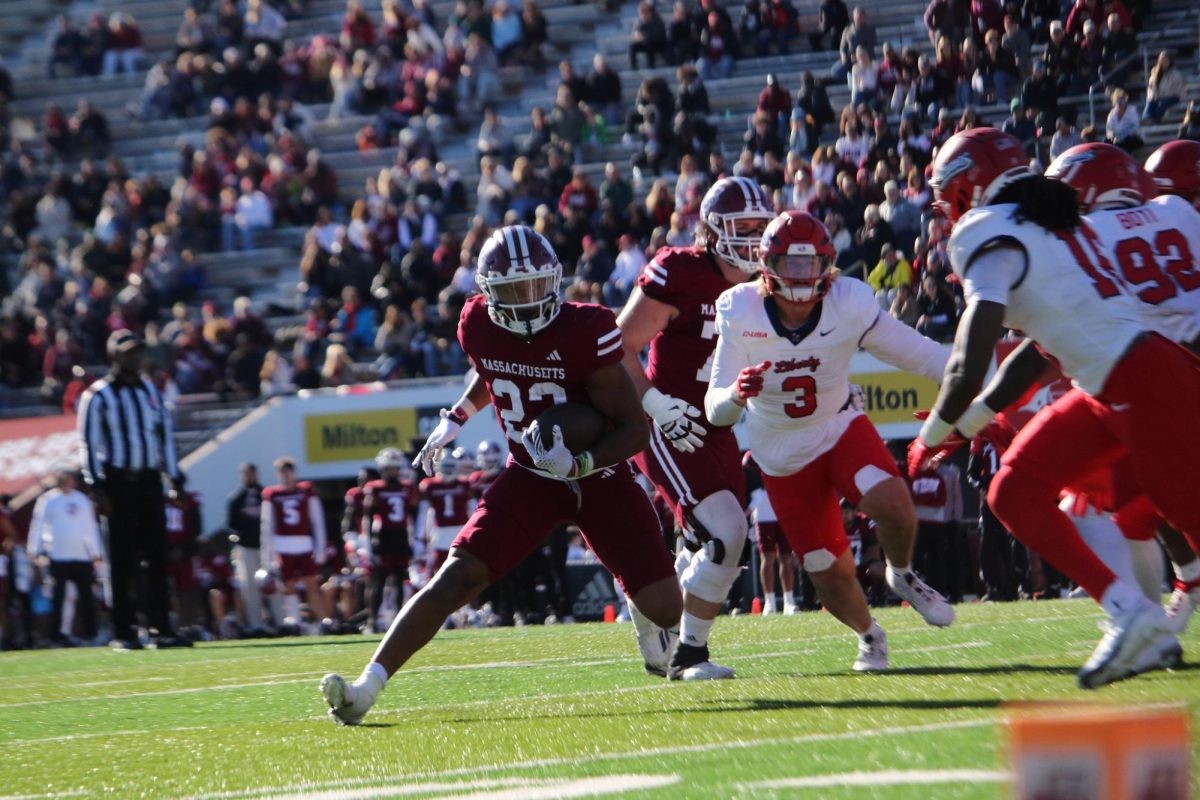
James Franco’s illustrious 17-year acting career has been nothing shy of unique.
He started his career as a too-cool teen on “Freaks and Geeks,” then played reluctant villain, Harry Osborn, in the mid-2000s’ “Spider-Man” trilogy. The final push towards conventional leading man status seemed to be “Tristan + Isolde,” a sappy, medieval-set romance that practically guaranteed Franco’s face would be plastered on the bedroom walls of pre-teens.
Wanting to be taken seriously as more than just a pretty face, he began signing on to perpetually stranger films, as well as remaking his public image through a set of ever more eccentric ploys: playing a gonzo version of himself on “General Hospital,” appearing to be high while hosting the Oscars and making a lot of very strange modern art.
The latest stop on Franco’s journey toward self-mythification is “Oz The Great and Powerful,” Sam Raimi’s prequel to the classic 1939 film “The Wizard of Oz.”
Franco plays Oz (Oscar Diggs), an old-timey circus magician and all-around con man, whose tricks get him in trouble with the ladies, as well as with their husbands. While running from the circus’ strongman, Oz climbs into a hot air balloon and manages to float away from his pursuer directly into the path of a tornado. He’s whirled around and around before finally crash-landing in a fantastical, unknown land.
Oz is enthralled with his new surroundings, which like the original film, bursts from black and white into color upon leaving Kansas. Raimi – who also directed Franco in the “Spider-Man” films – is also clearly overexcited by the possibilities computer-generated imagery (CGI) has brought to modern film. Everything, however, looks a bit plastic, too smooth and neon to be believed.
While Oz is exploring his landing site, he’s quickly discovered by Theodora (Mila Kunis), a self-described “good witch.” She explains that the Land is under siege by the Wicked Witch of the West and that it has been prophesied that a wizard would come from the sky to save them all.
Oz then became the famed “Wizard of Oz,” a protagonist of L. Frank Baum’s 1900 children’s novel. Baum, in fact, compiled 17 works set within the Oz universe, many of which provide the back-story of the Land itself, as well as of its most famous inhabitants. Though the Wizard doesn’t get an entire book to himself, his past is mentioned in several of the sequels.
Baum’s novels are in the public domain but rights to the original film are owned by MGM, so Raimi had to tread carefully. There are no ruby slippers in this remake, and the skin tone of one wicked witch had to be carefully monitored so as not to come too close to the shade Margaret Hamilton was painted for the 1939 film.
Speaking of witches, just who is this Theodora? She and her sister Evanora (Rachel Weisz) are witches of the Emerald City, and the pair quickly fills Oz in on the prophecy. Oz is more than happy to continue pretending to be a true wizard, as it means he gets to be king of Emerald City and owner of all its many riches. That is, until Evanora points out that to claim the throne he must first slay Glinda (Michelle Williams), who she claims is the Wicked Witch, but is in fact the Good Witch.
In fact, the only genuinely interesting part of “Oz The Great and Powerful” is the anticipation of finding out which of the three witches is actually destined to go green. Once the answer is revealed, about halfway through, there aren’t many other reasons to continue caring about the plot, which concerns Oz’s attempts to vanquish whichever witch is actually the evil one.
Franco often seems unable to carry the weight of a full-length feature. In nearly all his previous work he’s played sidekicks or smaller parts, and these seem to be the roles at which he excels most (“127 Hours” being an excellent exception).
Franco has decidedly modern mannerisms, and often appears unsuited to playing a character from the turn-of-the-20th century. The fact that Oz’s greatest motivations are acquiring wealth and sleeping with as many of the witches as possible also doesn’t make him a particularly appealing protagonist.
In the end, Raimi is preoccupied less with retelling “The Wizard of Oz” than with making an homage to film itself. Oz’s most brilliant trick involves creating a film (remember, he’s “The Man Behind the Curtain”). He also name-checks Thomas Edison, the inventor of the motion picture camera and of the first movie theaters.
Hollywood has always loved producing films that show off the wonders of Hollywood, and this trend has only grown in recent years, spurred on by the critical success of films like “The Artist,” “Hugo” and this year’s Best Picture winner, “Argo.”
“Oz The Great and Powerful” is the latest release to capitalize on Disney’s strategy of remaking classic, well-loved films. Remember 2010’s “Alice in Wonderland”? Another Disney release, it was the second-highest grossing film of the year. “Oz The Great and Powerful” has a similar $200 million budget. Turning classic film nostalgia into big profits seems to be the greatest trick of all for Disney.
Ariel Kay can be reached at [email protected]


















